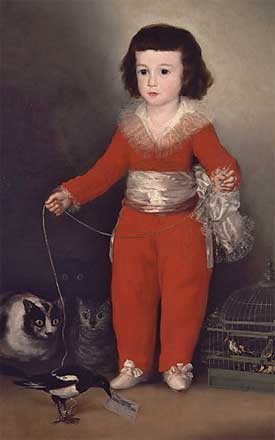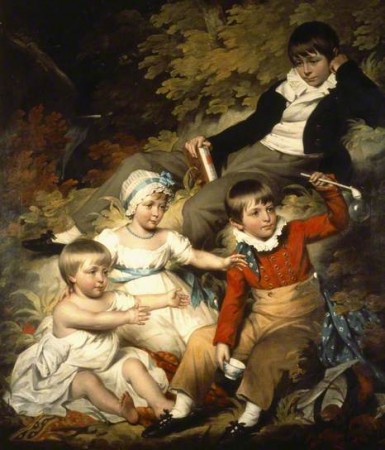
Manuel Osorio Manrique de Zuñiga (1784–1792), possibly 1790s Francisco de Goya y Lucientes (Spanish, 1746–1828)
I have a new book coming out next February with National Geographic. Here’s the cover. The subject is fashion, namely, a history of the world through the lens of what people wore, and why. It’s in the final layout phase now. The layout phase has been so much fun, because I love, love, love to do image research. The one downside of image research is that it’s so easy to get sidetracked.
Here’s one story I couldn’t resist sharing. I was researching late 18th century children’s wear and, specifically, looking for an image of a boy in a skeleton suit. During the Enlightenment, the Great Thinkers were urging a return to the natural state. In Rousseau’s famous essay on education (Emile ), he urged parents to de-hoop and de-corset their children (well, at least the boys). As he put it:
The limbs of the growing child should be free to move easily; there should be nothing tight, nothing fitting closely to the body, no belts of any kind . . .
After that, the skeleton suit—a loose-fitting, relatively unrestrictive garment, became all the rage. (Rousseau didn’t exactly practice what he preached, though, when it came to giving children an unrestricted upbringing. He fathered five children out of wedlock with his housekeeper, and sent every one to the foundling hospital. Nice, JJ.) For more on children’s wear and skeleton suits, see my blog post here.
Here’s the picture I found, painted around 1803 by John James Halls:

Credit: The National Trust
These are the children of one Richard Croft. (More about Richard on the next blog–his is a fascinating story.) There’s Thomas, in the red and gold sailor suit, blowing bubbles. Francis, aged five, is in the white dress, and the baby is named Archer. But the poignant one is Herbert, in black with a book. He would have been ten years old. The painter put him in the traditional pose of Melancholy, because Herbert is dead. He sat for the artist early on, but by the time the paining was finished, in 1803, he had died.